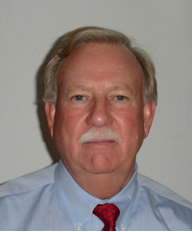About the topic
Bio
Get the Flyer (pdf)
About the topic
Dr. Roop has led research teams whose accomplishments include identifying many of the genes required for normal skin development and discovered that defects in some of those genes cause inherited skin diseases characterized by a very fragile skin, which blisters easily and may result in neonatal death. He also has provided insights into the genetic defects that lead to skin cancer.
Dr. Roopís laboratory has had a long-standing interest in studying genetic pathways required for normal skin development and in the identification of genetic alterations that occur in inherited skin diseases and in acquired skin diseases such as cancer. The outer layer of the skin, the epidermis, is constantly renewed by adult epidermal stem cells, which persist throughout life. They have have recently shown that epidermal stem cells are defective in some inherited skin diseases that exhibit fragile skin. Current research efforts are focused on developing methods to isolate and correct defective epidermal stem cells so that they could eventually be grafted onto patients with inherited skin fragility syndromes. Improved methods for the isolation and manipulation of epidermal stem cells could also be used for treating patients with chronic wounds or severe burns.
With regard to genetic events that result in the development of skin cancer, they have used genetically engineered mouse models to show that the accumulation of genetic defects in epidermal stem cells eventually results in tumor formation. Furthermore, they have recently discovered that skin tumors themselves are maintained by defective stem cells, referred to as cancer stem cells. They are now working toward isolating and characterizing cancer stem cells. An improved understanding of cancer stem cells could result in the development of novel therapeutic strategies that specifically target cancer stem cells for destruction and prevent tumor recurrence.
And they are also testing whether adult skin stem cells can be reprogrammed to form other cell types, such as neuronal cells. The promise of that approach, should it prove to be practical, will be nearly unlimited.
Recently Dr. Roop outlines three major challenges for using our rapidly-accumulating knowledge of stem cell biology:
The 1 st Challenge: Adult Stem Cell Plasticity
Traditionally, adult stem cells were through to have limited potential, only renewing the tissue from which they were derived. However, recent evidence suggests that adult stem cells from one tissue may be able to renew other tissue types.
The 2 nd Challenge: Reprogramming of Adult Skin Cells into Embryonic Stem Cell-like Cells
Several independent research groups have been able to genetically reprogram adult skin cells into embryonic stem cell-like cells [induced pluripotent stem (iPS) cells]. The therapeutic potential of iPS cells for tissue repair and regeneration is enormous; this procedure not only eliminates ethical concerns associated with generating ES cells from fertilized human embryos, but it also avoids the complication of immune rejection, since the iPS cells would be generated from the same individual in need of treatment.
The 3 rd Challenge: Cancer Stem Cells: Getting to the Root of the Matter.
Until recently, it was generally assumed that all cancer cells were the same. However, emerging data from virtually all cancer types suggest that cancers may be maintained by a relatively small number of cancer stem cells that are resistant to traditional cancer therapies. One way to put these observations into perspective is to think of a lawn filled with dandelions. Initially after mowing the lawn, the dandelions appear to be gone, however, the roots are still intact and with time, the dandelions reappear. In the case of cancer, radiation and chemotherapy may destroy most of the tumor, but the roots, i.e. the cancer stem cells are resistant, and with time the cancer reappears.
Adult epithelial stem cells, which keep tissues like skin and the lining of the oral cavity, colon, lungs and other organs regenerating and therefore alive, divide slowly and live long. They may accumulate genetic damage from carcinogens we are exposed to in the air, water and food. With enough genetic damage, they can give rise to cancer-cells that divide very quickly and out of control. Combine this with the idea that CSCs can change roles midstream and lie dormant for years before rearing up again, and you might begin to fathom why people still die from solid tumors like breast, lung and prostate cancer 38 years after President Nixon declared war on cancer.
The NIH makes available a useful reference page on stem cells for the general reader.
The latest newsletter from the CU stem cell group.
Bio
 Dr. Dennis R. Roop is Professor of Dermatology, holds the Charles C. Gates Chair in Regenerative Medicine and Stem Cell Biology, and is director of the Regenerative Medicine and Stem Cell Biology Program at the University of Coloradoís Anschutz Medical Campus in Aurora. Prior to joining CU in 2006, Dr. Roop was professor of molecular and cellular biology at the Baylor College of Medicine in Houston. In 2001, he received the Michael E. DeBakey Award for Excellence in Research, the medical school's highest award. Originally from Jonesville, VA, Dr. Roop graduated from Berea College in 1969 with a degree in biology. He received his MS and PhD degrees from the University of Tennessee, Knoxville, and completed post-doctoral work at Baylor College of Medicine.
The Gates Family Fund donated $6 million to start CUís Charles C. Gates Program in Regenerative Medicine and Stem Cell Biology. A year later they gave The Children's Hospital and the University of Colorado School of Medicine another $5 million to help continue translating laboratory stem-cell science into help for patients of all ages with a variety of inherited and acquired illnesses. Dr. Roop now directs a team of about 26 people, including seven faculty members, in a 10,000-square-foot university research laboratory.
Dr. Dennis R. Roop is Professor of Dermatology, holds the Charles C. Gates Chair in Regenerative Medicine and Stem Cell Biology, and is director of the Regenerative Medicine and Stem Cell Biology Program at the University of Coloradoís Anschutz Medical Campus in Aurora. Prior to joining CU in 2006, Dr. Roop was professor of molecular and cellular biology at the Baylor College of Medicine in Houston. In 2001, he received the Michael E. DeBakey Award for Excellence in Research, the medical school's highest award. Originally from Jonesville, VA, Dr. Roop graduated from Berea College in 1969 with a degree in biology. He received his MS and PhD degrees from the University of Tennessee, Knoxville, and completed post-doctoral work at Baylor College of Medicine.
The Gates Family Fund donated $6 million to start CUís Charles C. Gates Program in Regenerative Medicine and Stem Cell Biology. A year later they gave The Children's Hospital and the University of Colorado School of Medicine another $5 million to help continue translating laboratory stem-cell science into help for patients of all ages with a variety of inherited and acquired illnesses. Dr. Roop now directs a team of about 26 people, including seven faculty members, in a 10,000-square-foot university research laboratory.
